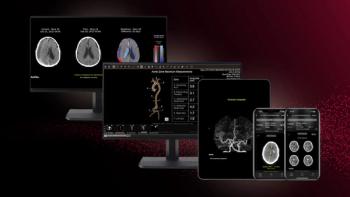
Incidental CT Findings Handled Inconsistently - Even at Top Institutions
Agreement is lacking - both across institutions and within departments - for the management of six commonly encountered incidental findings on body CT, concludes a study in the November issue of the Journal of the American College of Radiology. Departments should develop guidelines to ensure consistent patient recommendations, authors said.
Agreement is lacking - both across institutions and within departments - for the management of six commonly encountered incidental findings on body CT,
A team led by radiologist Pamela T. Johnson, MD, of Johns Hopkins University, designed a multiple-choice survey to query radiologists about their handling of 12 incidental findings - something unrelated to the illness being treated and found by accident - on body CT.
Choices ranged from “do not report” to advising interventional procedures tailored to the organ. Surveys were administered to
The hypothetical patient was a 45-year-old woman with no history of cancer. Johnson and colleagues included a 1-cm thyroid nodule, a 5-mm noncalcified lung nodule, coronary artery calcification, a 2-cm adrenal nodule, a 2-cm pancreatic cyst, a 1-cm enhancing liver lesion, a 2-cm high-density renal cyst, short-segment small bowel intussusception, a 1-cm splenic cyst, focal gallbladder wall calcification, and a 3-cm ovarian cyst in both a premenopausal woman and a postmenopausal woman.
The 27 radiologists who completed the survey came to 70 percent or greater agreement on interpretation for only six findings: recommend ultrasound for a 1-cm thyroid nodule, recommend ultrasound for a 3-cm cyst in postmenopausal woman, follow Fleischner Society recommendations for a 5-mm lung nodule, describe only coronary calcification, and describe as likely benign both short-segment small bowel intussusception and a 1-cm splenic cyst.
“It is important to note that at present, 100 percent agreement was not identified for the management of any of the 12 findings. An equally essential discovery is the lack of agreement across academic institutions and even within individual institutions for other incidental findings,” said Johnson.
Newsletter
Stay at the forefront of radiology with the Diagnostic Imaging newsletter, delivering the latest news, clinical insights, and imaging advancements for today’s radiologists.



























